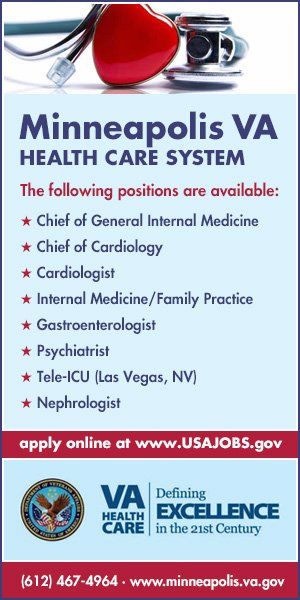ooking back as far as history allows, we can see that treating pain was an important issue. Ancient Greek literature cites the use of plants, herbs and their derivatives that were used thousands of years ago to treat pain. Surviving artwork depicts doctors of the day providing care to patients very obviously in pain. Unfortunately, this most basic and common human problem remains a front and center issue today. To be sure, remarkable advances have been made and new developments are continuing apace, but many of the fundamental issues of pain present a puzzle whose solution is evolving and requires special expertise to address.
Specialty Care
The Evolution of Pain Management
A new multidisciplinary approach
BY Angelito Sajor, MD
Jumping quickly to modern times, and focusing only on pain, some quick perspective may be helpful. As science gained a greater understanding of the neurophysiology of pain, some researchers began to propose that pain be recognized as a fifth vital sign. Research articles on this topic began appearing around 1995, encouraging health care providers to adopt this thinking. One challenge this perspective posed, and still poses, was a definitive measurement tool. We now have reliable, brief, multi-dimensional pain measures, but they cannot account for relative pain tolerance or address undertreated pain.
As we look at the past 30 years of advances in treating pain, other important things bear consideration. First of all, pain medicine as a subspecialty in anesthesiology was first conceived in 1989, with the first certifications issued in 1993. Before this time, doctors were opening pain clinics but they were not favorably regarded by many of their peers. Today the American Board of Anesthesiology and the American Board of Medical Specialties both offer pain management certifications and the field has become a trusted and vital part of health care delivery.
When Nura Pain Clinics first opened its doors in 1995, then known as MAPS Medical Pain Clinics, the field of pain management was very different from what it is today. Options were limited, opioids were routinely prescribed as first-line therapy, and advanced technologies like spinal cord stimulation or targeted drug delivery were in their infancy. We have witnessed — and helped drive — a shift from a narrow focus on suppressing pain to a comprehensive, multidisciplinary approach that restores function and quality of life. This journey mirrors the evolution of pain medicine itself: from early reliance on medications and basic interventions to today’s sophisticated therapies, data-driven care and integrated treatment plans.
Artificial intelligence and data-driven analytics have begun to influence pain medicine.
Drawing on decades of clinical practice and close involvement in every major advance, we have watched pain medicine grow from a promising but limited specialty into a robust discipline grounded in science, technology and patient-centered care. That long view provides a clear perspective on how innovation, research and collaboration have shaped the field.
Evolving Tools and Philosophy
Thirty years ago, interventional pain medicine was still finding its footing. Early pharmacotherapy options were limited and spinal procedures were relatively rudimentary, but the seeds of innovation were planted.
One of the earliest waves of progress came in the late 1990s and early 2000s with improvements in interventional procedures. Radiofrequency ablation (RFA), once a niche technique, became more precise and effective as fluoroscopic guidance and later ultrasound imaging enhanced accuracy and safety. The advent of cooled RFA technology allowed physicians to create larger, more durable lesions, offering longer-lasting relief for patients with facet joint or sacroiliac pain.
Around the same period, targeted drug delivery —using implantable intrathecal pumps — moved from experimental to mainstream therapy for severe, refractory pain. Initially these pumps were cumbersome and unfamiliar to many physicians. Over time, dedicated pump programs have refined dosage protocols, safety monitoring and patient education, making intrathecal therapy a reliable alternative to high-dose oral opioids. Delivering minute amounts of medication directly to the spinal fluid reduces systemic side effects while achieving profound pain control.
As the new millennium unfolded, neuromodulation technologies rapidly advanced. Early spinal cord stimulators produced a single “tonic” waveform that required patients to feel tingling paresthesia to mask pain. Newer systems introduced high-frequency and burst stimulation, which provide pain relief without uncomfortable sensations. Dorsal root ganglion (DRG) stimulation emerged as a means to precisely target focal neuropathic pain, while peripheral nerve stimulation opened less invasive avenues for localized syndromes. These developments have given clinicians extraordinary flexibility to match therapy to each patient’s unique pain pattern.
Emerging Frontiers
In the past decade, regenerative approaches such as platelet-rich plasma (PRP) injections and stem cell therapies have attracted attention as potential treatments for musculoskeletal and degenerative conditions. Although these remain under active investigation, they signal a growing commitment to harness the body’s own healing potential.
Most recently, artificial intelligence and data-driven analytics have begun to influence pain medicine. Predictive algorithms help identify which interventions are most likely to succeed for individual patients, while outcome tracking and electronic health record integration offer a more objective, personalized view of each patient’s journey. These tools hold promise for tailoring treatment plans in real time, further refining patient care.
A Guiding Philosophy
Through each of the advances mentioned above, our guiding philosophy has evolved as well. Pain management is no longer about simply lowering pain scores. It is about restoring function, improving quality of life and addressing the biopsychosocial dimensions of chronic pain. This means integrating medical, interventional, psychological, and rehabilitative care — an approach that reflects not just technological progress but a deeper understanding of the whole person. Chronic pain rarely stems from a single cause, and it seldom responds to a single solution. Lasting relief requires a carefully orchestrated plan that blends medical, interventional, physical and psychological strategies.
When a new patient arrives, our team begins with a thorough evaluation that goes far beyond a pain score. We look at the whole person: medical history, imaging, physical function, emotional well-being and lifestyle factors. A pain physician leads this initial assessment, but from the outset we involve other specialists to ensure no aspect of the patient’s experience is overlooked.
From there, we build a personalized plan that may include interventional procedures, medication management and rehabilitative therapy. Our physical therapists provide in-clinic programs to improve strength, mobility and endurance. Behavioral health specialists help patients develop coping strategies, address mood disorders that often accompany chronic pain, and build resilience. Nurses and care coordinators act as navigators, educating patients and their families, arranging follow-up care and making sure that every step of the journey is clear and connected.
Advanced interventional therapies are seamlessly incorporated when appropriate. For example, we offer a dedicated targeted drug-delivery service for patients who benefit from intrathecal pumps, as well as a neuromodulation team skilled in spinal cord and peripheral nerve stimulation. Because these experts work side by side, treatment decisions are made collaboratively and adjustments can be implemented quickly.
This level of integration is more than convenience — it changes outcomes. Instead of bouncing from one provider to another and piecing together conflicting recommendations, patients experience a single, coordinated program designed to restore function and quality of life. I often hear from patients that the continuity and teamwork we provide make them feel genuinely supported and hopeful, sometimes for the first time in years.
Chronic pain rarely stems from a single cause, and it seldom responds to a single solution.
Patient Transformation
Our patients often describe a transformation that extends far beyond the relief of physical discomfort. As their persistent pain is brought under better control, daily life can begin to reopen in ways many had stopped imagining were possible.
For some, improved function means the ability to return to work or maintain employment without constant absences or fatigue. Others regain the stamina to care for children or grandchildren, to travel, or to take part in hobbies that once defined their sense of self. Activities as simple as cooking a meal, walking in the neighborhood or sleeping through the night without being jolted awake by pain become milestones of independence and confidence.
The Nura model — integrating medical interventions, physical therapy, and behavioral health support — creates the conditions for these outcomes. By addressing the physical, psychological and social dimensions of chronic pain in a single, coordinated plan, patients often experience not only measurable reductions in pain scores but also a renewed sense of agency and emotional well-being. Anxiety and depression, which frequently accompany chronic pain, tend to recede as people see tangible progress and regain control over their bodies and daily routines.
Perhaps most striking is the ripple effect on relationships and community life. As pain recedes and function improves, patients commonly report stronger family connections, the ability to participate in social gatherings and a return to roles that give life meaning, whether that’s volunteering, exercising with friends or simply enjoying a meal out without worry. In these ways, comprehensive pain management is not just about easing pain; it is about restoring dignity and enabling a richer, more engaged life.
Challenges Ahead
Twenty-some years ago, I chose pain medicine as my life’s work in large part because of my father, who developed lung cancer with metastasis while I was still in medical school. Watching him suffer so terribly in his final months provided me with a strong motivation to pursue this specialty. I remember thinking then: how is it we can navigate the universe, go to the moon, but we can’t provide a reasonable quality of life through the holistic management of chronic pain? Yet even now, with the tremendous technologic, interventional and pharmacologic advances of the last three decades, pain management still presents significant challenges for physicians and health care providers. We must all work together to offer comprehensive, multidisciplinary care that restores dignity and quality of life for patients living with pain.
Chronic pain carries a powerful social stigma that compounds a patient’s suffering. Because pain is often “invisible” and lacks clear diagnostic markers, patients may be doubted by family, employers and even health care providers. This disbelief seeps into institutions as well — insurance requirements for “objective” proof or rigid opioid policies can unintentionally reinforce bias. Internalized shame erodes a patient’s self-confidence and lessens their adherence to treatment. The result is higher rates of depression, anxiety, isolation, delayed care and even suicidality.
Medical coverage can lag behind innovation, impeding access to critical, proven, therapies by labeling them “investigational.” Physicians who treat chronic pain often navigate a maze of prior authorizations, step-therapy requirements and insurance denials before patients can receive advanced interventions. These administrative barriers, intended to control costs and opioid misuse, can delay care, add hours of paperwork, and contribute significantly to provider burnout while patients wait in unnecessary pain.
It is also a significant challenge to manage patient expectations: if someone hopes for the total elimination of pain, disappointment is almost inevitable, so it is important to emphasize realistic functional goals — returning to daily activities and independence.
Finally, access remains a pressing issue. Here in the Twin Cities, several major pain clinics have closed and demand for pain management services is outpacing supply at this time.
The Future of Pain Medicine
Looking ahead, several exciting developments promise to shape our field. Among them are:
- Smaller, smarter devices with improved batteries and programming for neuromodulation.
- Closed-loop stimulation that senses neural activity and adjusts therapy automatically.
- Artificial intelligence to refine real-time treatment planning and predict outcomes.
- Regenerative medicine, such as stem cell–based therapies, is pending further clinical validation.
- Expanded access through clinic growth, telemedicine and broader insurance coverage.
- Reduction of the stigma of pain.
- Adoption of policies across the spectrum of patient care that support comprehensive, multidisciplinary pain management rather than question its legitimacy.
Over the past 30 years, pain medicine has evolved from a limited specialty into a dynamic field where advanced technology, data-driven care and integrated treatment models routinely restore function and quality of life for patients once left with few options. The next three decades promise even greater transformation, including smarter neuromodulation systems and regenerative therapies. Real-time AI-guided treatment planning will not only broaden the range of interventions but also streamline care, reduce administrative burdens and expand access. For patients, that will mean earlier relief and a better quality of life. For health care providers, it means working within a meaningful discipline that continues to innovate, collaborate and redefine what it means to truly alleviate pain.
Angelito Sajor, MD, is a pain management physician at Nura Precision Pain Management in the Twin Cities.
MORE STORIES IN THIS ISSUE
cover story one
The Rise of Health Misinformation and Disinformation: Recognizing the Truth
By Robin Austin, PhD, DNP, RN, DC, AND Katheren Koehn, MA, RN
cover story two
The Rural Health Transformation Fund: Creating a sustainable way forward




































